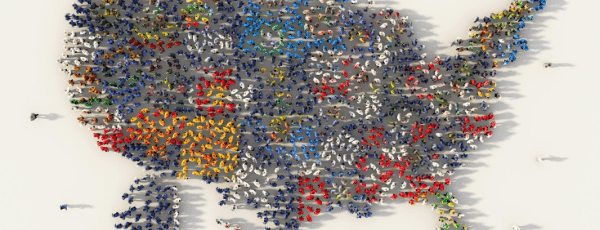Best and Worst States for Coronavirus Unemployment Benefits

BySara Korn
UpdatedDec 25, 2025
- Unemployment benefits vary by state.
- Most states pay between $300 and $600 per week.
- Some states have waiting periods before you can collect benefits.
Table of Contents
Unemployment continues to grow as the COVID recession drags on. According to the U.S. Department of Labor, an additional 1,434,000 new unemployment insurance claims were filed across the nation for the week ending in July 25, and nearly the same number of claims were filed the week before. This brings the unemployment rate to 11.6%, with over 17 million Americans now receiving unemployment insurance.
If you’re one of the many Americans now eligible for unemployment benefits, you may be wondering how to get your benefits, how much you’ll get, and for how long. The answers depend a lot on where you live.
Let’s take a look at some of the best and worst states for COVID unemployment benefits, and how you can find benefits information for your state.
How unemployment benefits work
With the unprecedented spike in unemployment, many of us are new to unemployment insurance system and not familiar with how it works. Unemployment benefits are managed by each state (even for federal CARES Act funds), and every state has different rules as far as how much they’ll pay. Some states are known for paying relatively little, or being very slow to pay.
Unemployment benefits are paid weekly, and usually require you to prove that you’re actively looking for a job. Your state may also require you to take any job offer you receive. In other words, refusing a job offer can make you ineligible to continue receiving benefits.
Now let’s look at how states compare when it comes to unemployment benefits during the COVID recession.
Best states and worst states for unemployment benefits
Our version of which states could be called “best” or “worst” is based on a snapshot of the states with the most and least generous benefits in terms of the maximum amount paid out each week, how long you can receive benefits for, and how quickly you can begin receiving benefits.
Best and worst states by amount paid
Most states pay between $300 and $500 per week, totaling around $1200 to $2000 per month. The amounts listed below are the maximum possible weekly benefit in a given state. States may reduce the amount you’re paid if you have income coming in from a side gig or part-time job.
| BEST | WORST |
|---|---|
| States paying over $600 per week | States paying less than $300 per week |
| Massachusetts – $823 | Mississippi – $235 |
| Washington – $790 | Arizona – $240 |
| Minnesota – $740 | Louisiana – $247 |
| New Jersey – $713 | Alabama – $275 |
| Connecticut – $649 | Florida – $275 |
| Oregon – $648 | Tennessee – $275 |
| Hawaii – $648 | |
| North Dakota – $618 |
Best and worst states by length of benefits
Every state limits the length of time someone can receive unemployment benefits. If you find a job before that time runs out, your benefits will end once you accept employment. Most states pay out benefits for a maximum of 26 weeks. However, nine states have shorter terms, and only two states go beyond 26 weeks.
| BEST | WORST |
|---|---|
| States providing benefits for over 26 weeks | States providing benefits for less than 26 weeks |
| Massachusetts – 30 weeks | Florida – 12 weeks |
| Montana – 28 weeks | Georgia – 14 weeks |
| Arkansas – 16 weeks | |
| Alabama – 20 weeks | |
| Missouri – 20 weeks | |
| South Carolina – 20 weeks | |
| North Carolina – 20 weeks | |
| Michigan – 20 weeks | |
| Idaho – 21 weeks |
Interestingly, Massachusetts pays the highest per week ($823) and also for the longest time, at up to 30 weeks. On the other end of the spectrum is Alabama, which pays only $275 a week for only 20 weeks maximum.
Best and worst states by speed of processing
Under normal circumstances, most states require a one-week waiting period after you file an unemployment claim before benefits are paid, but most states have waived that requirement due to the COVID-19 recession.
| States that have no waiting period at all | States that still require a 1-week waiting period |
|---|---|
| Delaware | New Mexico |
| Georgia | Oregon |
| Iowa | South Dakota |
| Maryland | Utah |
| New Jersey | Wisconsin |
| Vermont | |
| Wyoming |
Unemployment benefits by state
To find your state’s website for COVID unemployment benefits, click on your state on the interactive map from the US Department of Labor.
Will unemployment benefits be enough?
Because even the highest paying states only pay up to $600-$800 per week (about $2400-$3200 a month), and the worst states pay as little as $200-$300 per week (about $800-$1200 a month), most people can’t live off their benefits alone. This means many workers look for other ways to generate income and handle debt while out of work.
However, if you decide to take on a side gig to supplement unemployment benefits, make sure you first check your state’s rules on how that will affect your unemployment benefits. Some states will decrease the amount of benefits you receive if you work or earn over a certain amount per week.
How to handle debt when unemployment benefits aren’t enough
If you’re unemployed during the COVID-19 recession, dealing with debt can be hard, especially if you’re struggling to keep up with minimum payments. You may need some new strategies to manage your debt. To learn about your options and figure out what makes the most sense in your current financial situation, download our free How to Manage Debt Guide now.
Learn More:
Find Your State Unemployment Insurance Office (US Department of Labor)
How to Find the Coronavirus Assistance You Can Get from Your State (Freedom Debt Relief)
Unemployment Insurance Relief During COVID-19 Outbreak (US Department of Labor)
What’s the Difference Between Furlough, Layoff, and Termination? (Freedom Debt Relief)
3 Things You Might Need More Than a Stimulus Check (Freedom Debt Relief)
People just like you are seeking debt relief in Sacramento, CA and across the country. The first step is the most important one—explore your options.
A look into the world of debt relief seekers
We looked at a sample of data from Freedom Debt Relief of people seeking the best debt relief company for them during November 2025. This data highlights the wide range of individuals turning to debt relief.
Credit card balances by age group for those seeking debt relief
How do credit card balances vary across different age groups? In November 2025, people seeking debt relief showed the following trends in their open credit card tradelines and average credit card balances:
Ages 18-25: Average balance of $9,117 with a monthly payment of $285
Ages 26-35: Average balance of $12,438 with a monthly payment of $372
Ages 36-50: Average balance of $15,436 with a monthly payment of $431
Ages 51-65: Average balance of $16,159 with a monthly payment of $500
Ages 65+: Average balance of $16,546 with a monthly payment of $478
These figures show that credit card debt can affect anyone, regardless of age. Managing credit card debt can be challenging, whether you're just starting out or nearing retirement.
Personal loan balances – average debt by selected states
Personal loans are one type of installment loans. Generally you borrow at a fixed rate with a fixed monthly payment.
In November 2025, 44% of the debt relief seekers had a personal loan. The average personal loan was $10,718, and the average monthly payment was $362.
Here's a quick look at the top five states by average personal loan balance.
| State | % with personal loan | Avg personal loan balance | Average personal loan original amount | Avg personal loan monthly payment |
|---|---|---|---|---|
| Massachusetts | 42% | $14,653 | $21,431 | $474 |
| Connecticut | 44% | $13,546 | $21,163 | $475 |
| New York | 37% | $13,499 | $20,464 | $447 |
| New Hampshire | 49% | $13,206 | $18,625 | $410 |
| Minnesota | 44% | $12,944 | $18,836 | $470 |
Personal loans are an important financial tool. You can use them for debt consolidation. You can also use them to make large purchases, do home improvements, or for other purposes.
Tackle Financial Challenges
Don’t let debt overwhelm you. Learn more about debt relief options. They can help you tackle your financial challenges. This is true whether you have high credit card balances or many tradelines. Start your path to recovery with the first step.
Show source
Author Information

Written by
Sara Korn
Sara Korn is a freelance writer who enjoys guiding people to helpful solutions and new and better ways of reaching their goals. She loves stories both on screen and on the page, and is passionate about learning, growing, and teaching.